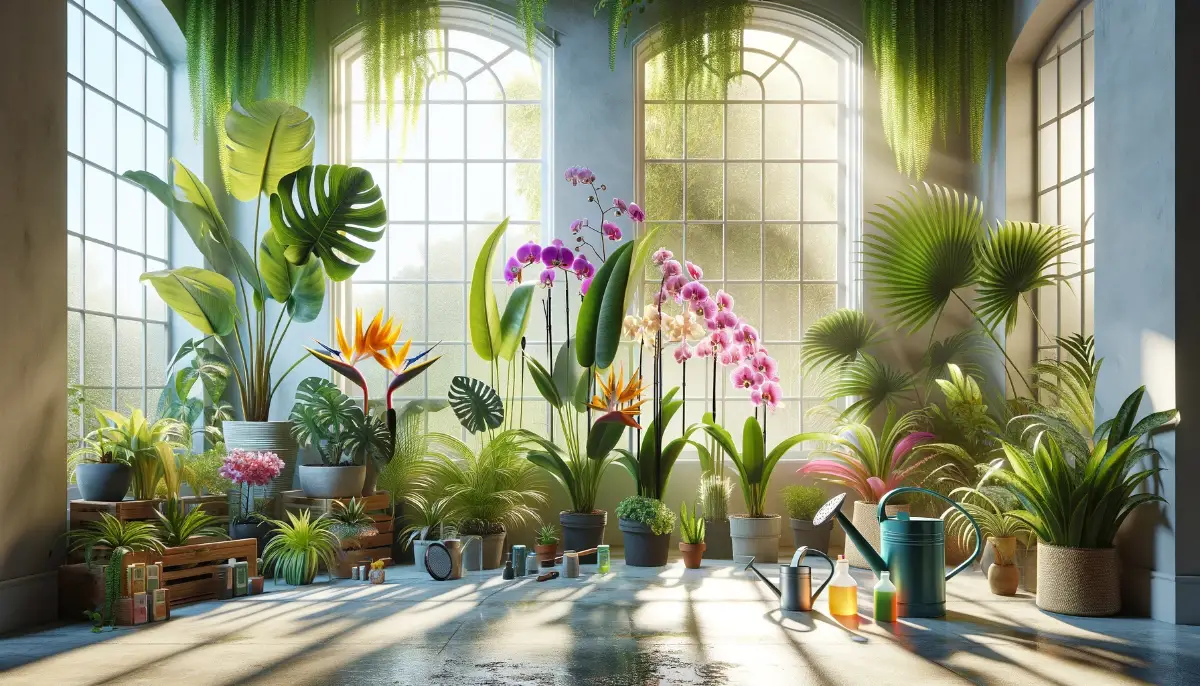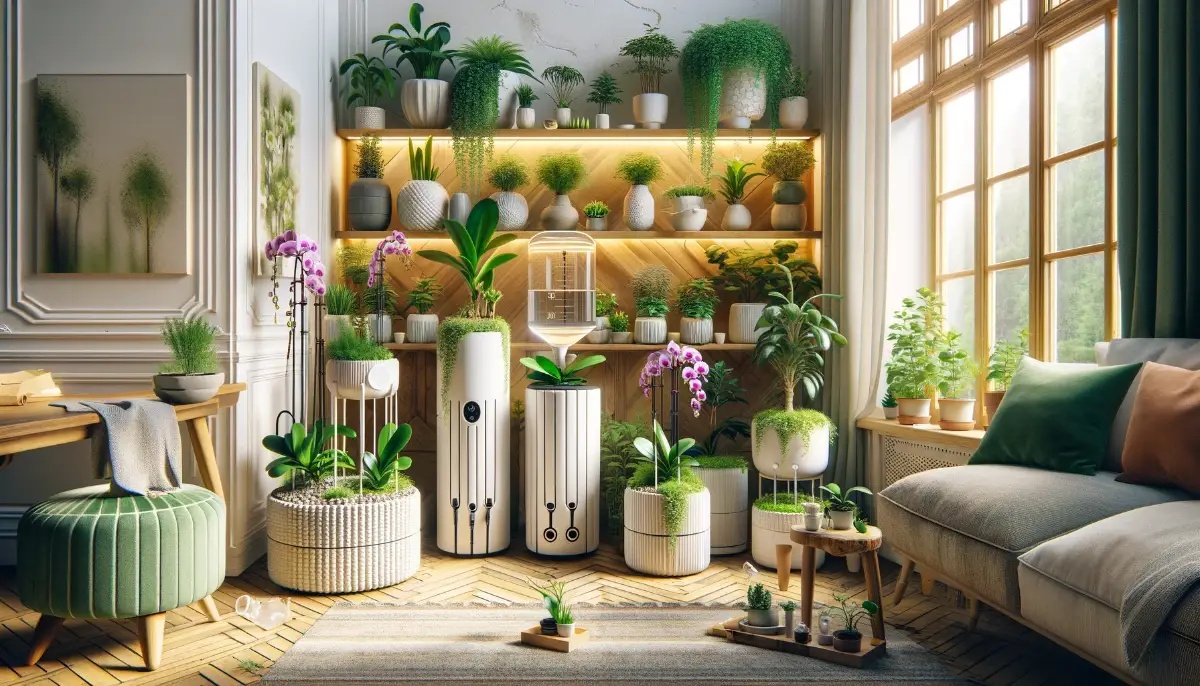Creating an indoor garden that mimics the lush environments of the tropics requires thoughtful selection of plants, strategic location choices, and an understanding of the care needed to keep these exotic beauties thriving.
Overview of Popular Indoor Tropical Plants
Tropical plants have a unique way of transforming any space into a vibrant, refreshing paradise. Among the most popular are:
- Orchids: Known for their stunning flowers and variety, requiring regular watering and indirect sunlight.
- Bird of Paradise: Adds exotic beauty with its large leaves and bright flowers, thriving in bright, indirect light.
- Monstera: Famous for its unique, holey leaves, needing bright, indirect light to flourish.
- Philodendron: With its beautiful foliage, it’s easy to care for, preferring regular watering and indirect sunlight.
Choosing the Right Location
The right spot is crucial for your tropical indoor garden. Aim for an area that receives plenty of natural light, typically near windows that allow for bright, indirect sunlight. Ensure the chosen spot maintains a temperature range between 70°F and 80°F and high humidity levels, ideally between 50% and 80%. Kitchens or bathrooms often provide these conditions naturally, making them ideal locations for your tropical retreat.
Best Plant Care and Maintenance
Proper care is essential for the health and longevity of your tropical plants:
- Watering: Keep the soil consistently moist but not waterlogged. Water when the top inch of soil feels dry, using room-temperature water to avoid shocking the plants.
- Fertilizing: During the spring and summer, apply a balanced, water-soluble fertilizer every two weeks to support growth.
- Pruning: Regularly prune to remove dead or yellowing leaves and to encourage a bushier growth.
- Pest Control: Be vigilant about pests such as spider mites and mealybugs. Treat infestations promptly with appropriate insecticides.
By adhering to these guidelines, you’ll set a strong foundation for your indoor tropical garden. Remember, the key to success lies in mimicking the natural habitat of these plants as closely as possible, ensuring they receive the right amount of light, warmth, and humidity.
Continuing with our guide to creating a tropical indoor garden, let’s delve into more specific care guidelines that will help ensure the health and vitality of your tropical plants. This section covers essential aspects such as humidity and temperature requirements, alongside care tips for some of the best tropical plants suited for indoor gardening.
Humidity and Temperature For Indoor Tropical Plants
Creating an environment that closely mimics a tropical plant’s natural habitat is crucial for its survival and growth. Here are the specific needs to focus on:
Temperature
- Tropical plants generally prefer a stable environment without drastic temperature fluctuations.
- Most homes, with temperatures well within the 70°F to 80°F range, are suitable.
- Avoid placing plants near drafty windows or doors and heating/cooling vents to prevent harmful temperature swings.
Humidity
- Tropical plants thrive in higher humidity levels than those typically found in homes, especially during the dry winter months.
- Misting plants every couple of days and using pebble trays can effectively increase the humidity around your plants.
Best Tropical Plants For Indoor Gardeners
Selecting the right plants is essential for a flourishing indoor tropical garden. Here are some top recommendations and their care tips:
Birds of Paradise
Requires consistent fertilizing and watering during its growing season, along with plenty of bright light.
Fiddle Leaf Fig
Native to western Africa, it needs bright light and consistent watering. It can be a bit tricky to start, but becomes easier to care for over time.
Christmas Cactus
Unlike typical cacti, it prefers humidity and more water, thriving in bright sunlight during the spring and summer.
Rubber Plant
Grows several feet tall in medium, indirect sunlight and doesn’t require much water, making it a striking and easy-to-care-for choice.
Pothos
Ideal for those seeking low-maintenance plants. It grows in medium to low light conditions and indicates when it needs water through leaf curling.
Indoor Tropical Plants FAQ
Can You Grow Tropical Plants Indoors?
Yes, with proper care, many tropical plants thrive indoors. Varieties like the peace lily and fig are quite easy to care for.
Do Tropical Plants Need a Lot of Light?
This varies by plant, but many can grow in low to medium light conditions. Some, like peace lilies, can even grow in partial shade.
When Do You Water Tropical Plants?
Generally, when the soil is dry to the touch. Some tropical plants prefer more water, but this is a good rule of thumb.
How do I properly water my tropical plants?
Tropical plants prefer consistent moisture but do not like to be overly wet or completely dry. Let the soil dry slightly (about 1-2 inches deep) before watering again. Avoid overwatering to prevent root rot. Consider using a moisture gauge to help maintain the right soil moisture level.
What’s the best way to manage humidity for tropical plants?
These plants thrive in high humidity, much higher than what’s typically found indoors. To increase humidity, you can mist the plants regularly, use a humidifier, or place them on a pebble tray with water. Make sure the pot does not sit in water to avoid root issues.
Watering Methods Explained Here
How much light do my tropical plants need?
Bright, indirect light is ideal for most tropical plants. Signs of insufficient light include dull leaf colors and leggy growth. If a plant is not getting enough light, consider moving it to a brighter location or using a grow light. Conversely, protect plants from too much direct sunlight, which can cause leaf burn.
When should I report my tropical plants?
Report your tropical plants when you see new growth, typically in the spring. Choose a pot that’s appropriately sized to avoid cramping their roots, which can lead to various health issues. After repotting, water the plant thoroughly to settle it into its new home.
How can I propagate my tropical plants?
Propagation can be done through stem cuttings or seed germination, with stem cuttings being more reliable. Cut a 4-6 inch stem below a node, remove lower leaves, and you may dip the end in rooting hormone before planting in soil. Maintain high humidity and moisture for the cuttings to encourage root development.
What should I do about pests and diseases?
Common pests include gnats, aphids, spider mites, mealybugs, scale insects, and thrips. Treat infestations with insecticidal soap, liquid dish soap mixed with water, or organic neem oil. For fungal diseases like leaf curl and root rot, use appropriate fungicides and remove any severely affected foliage.
How do I deal with common problems like yellow leaves or droopy foliage?
Yellow leaves may indicate over or underwatering, or a need for more sunlight. Adjust your watering schedule and ensure your plant gets plenty of indirect light. Droopy leaves can also result from watering issues; check soil moisture to determine if more or less water is needed.








